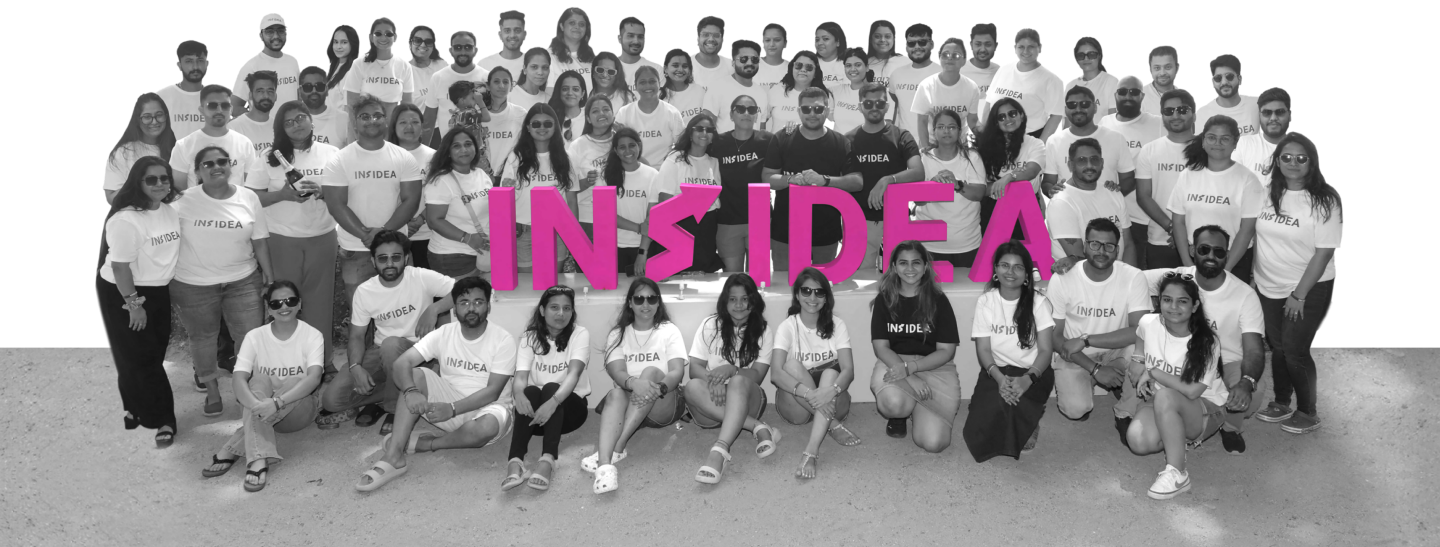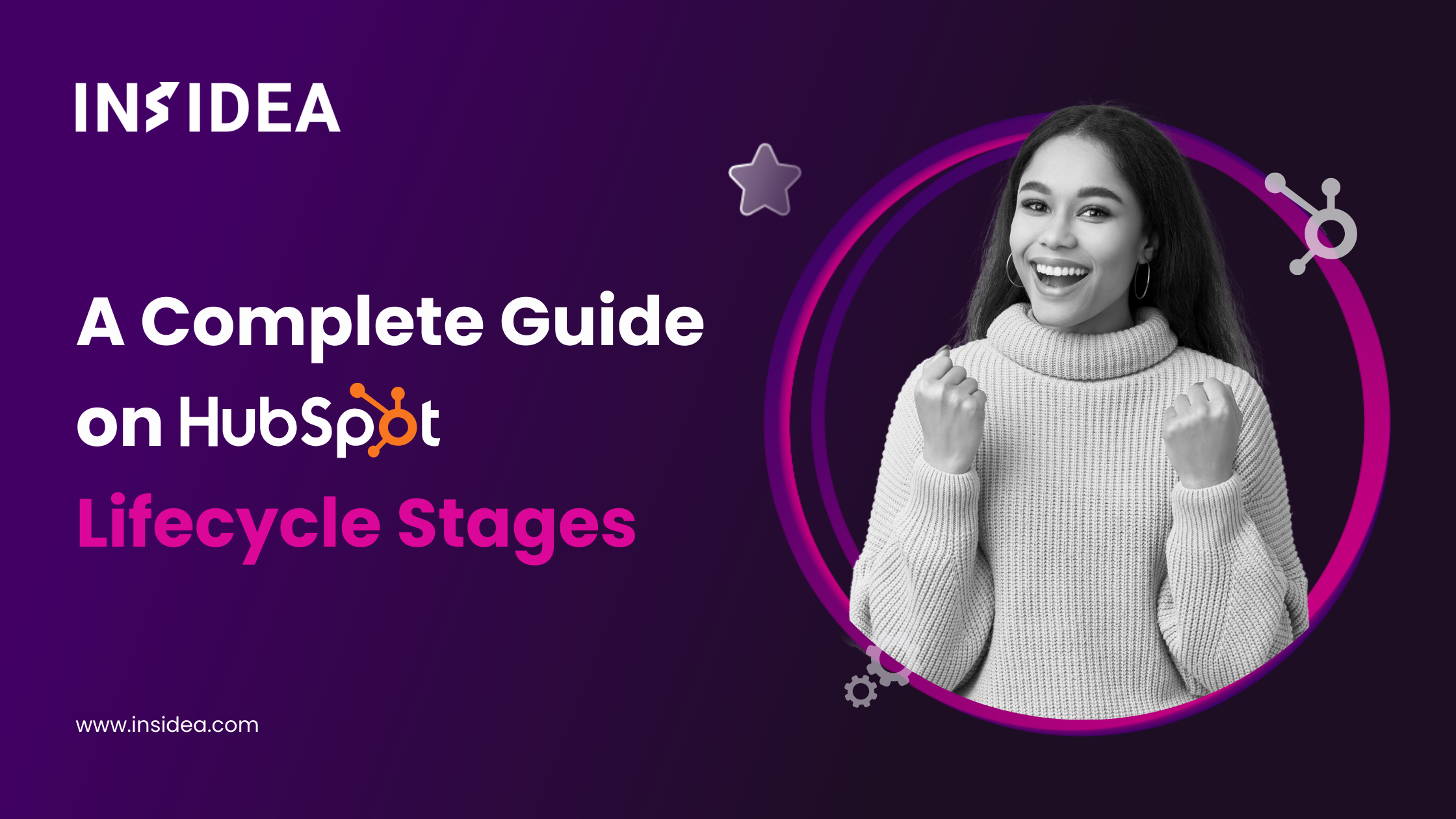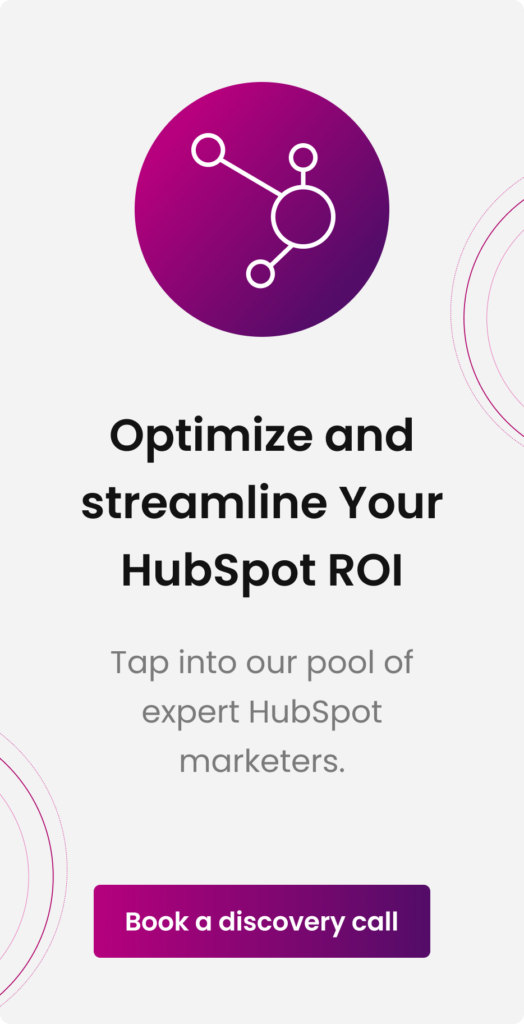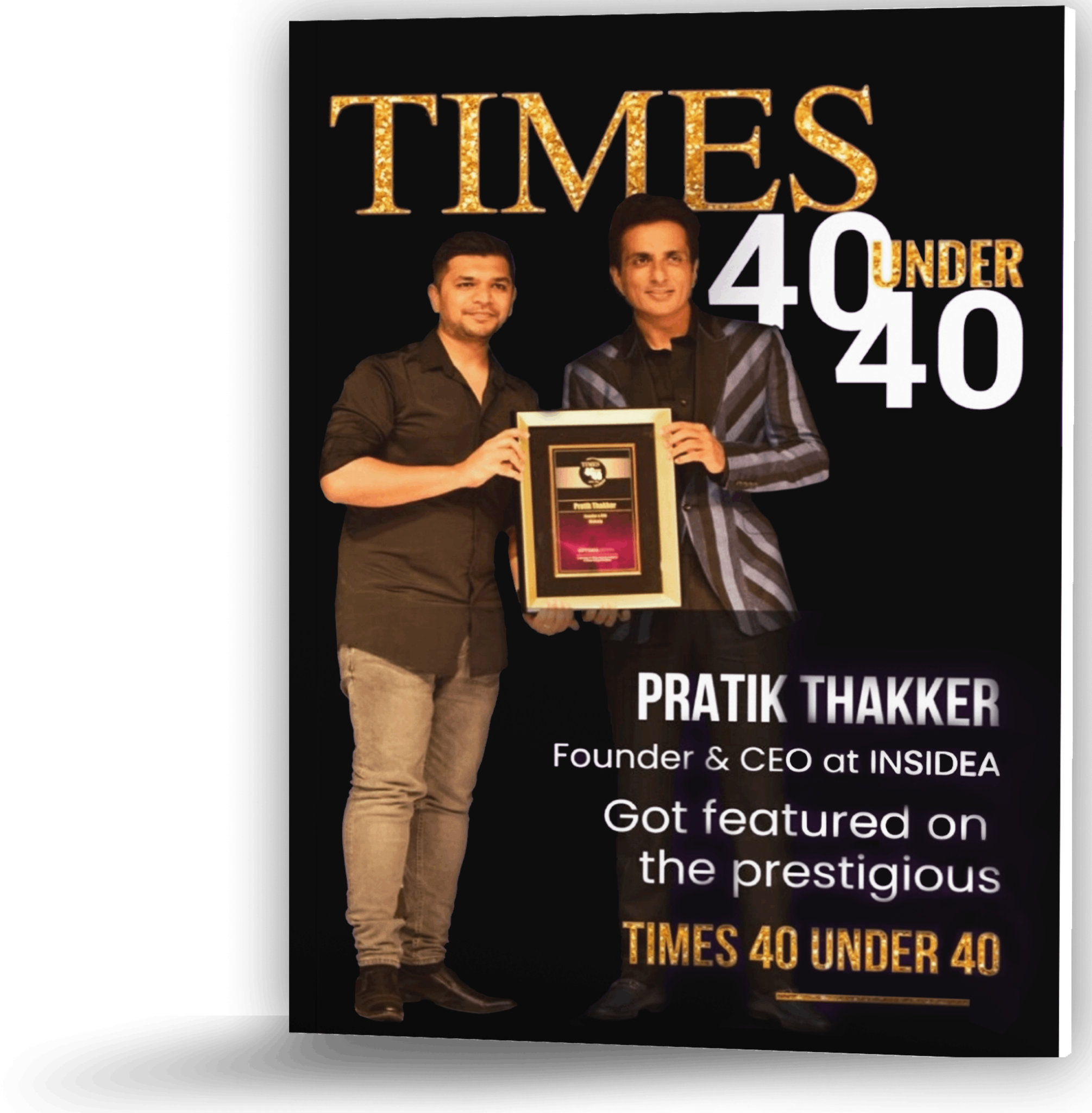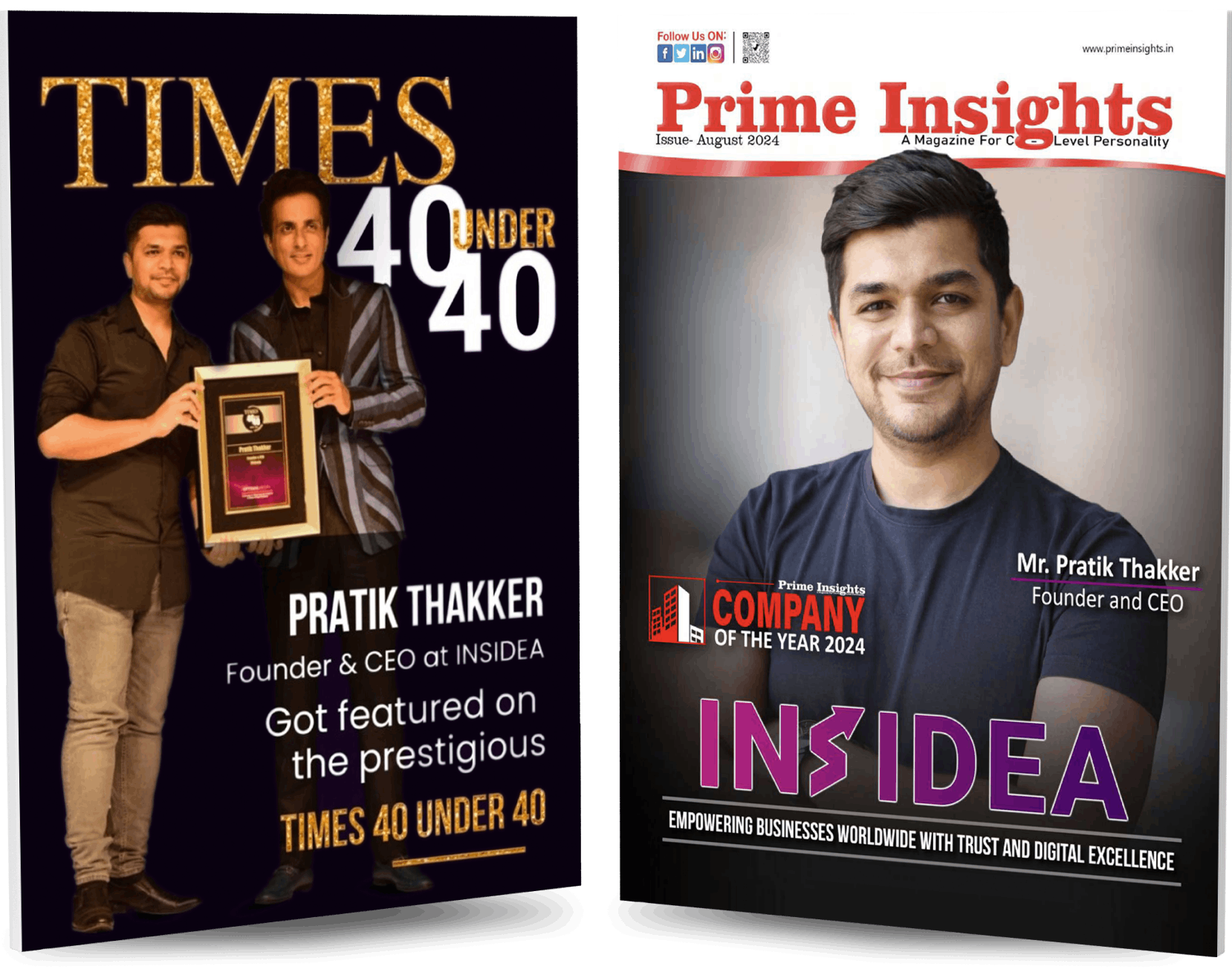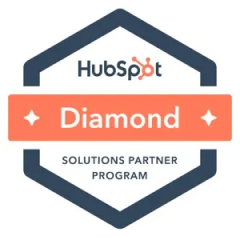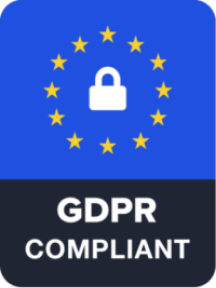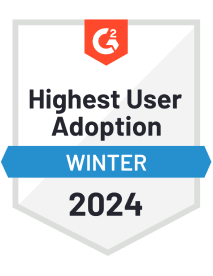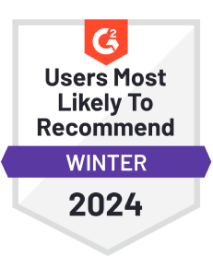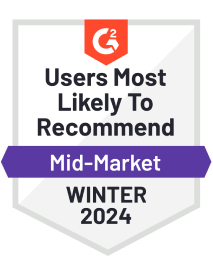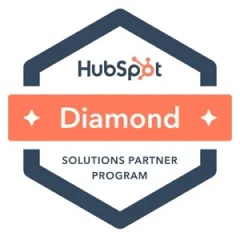Have you ever thought that going through the journey of a customer, from their first interaction with your brand to becoming a loyal advocate, can be complex? That’s where understanding the customer lifecycle comes into play. It’s a crucial concept that helps businesses foster long-term relationships with customers, leading to better retention and higher value over time.
But when it comes to managing this lifecycle within HubSpot, things can get a bit tricky. The platform’s Lifecycle Stages feature is powerful, yet it’s often misunderstood and not used to its full potential.
Whether you’re a seasoned HubSpot user or new to the platform, in this blog we will clarify what lifecycle stages are, how they function, and how you can tailor them to suit your business’s unique needs. We’ll simplify the complexities and help you set up a system that aligns with your teams and goals, ensuring you send the right message at the right time. Let’s dive in and unlock the full potential of HubSpot’s Lifecycle Stages.
What are HubSpot Lifecycle Stages?
HubSpot lifecycle stages are like signposts on the road of your customer’s journey with your brand. They mark the key milestones from the moment someone first discovers your product to the point where they become not just a customer but a fan who tells others about you. Think of these stages as a map that helps you track where each customer is and what you need to do next to keep them moving forward.
In HubSpot, there are eight distinct lifecycle stages. These stages are built into the system and are there to mirror the steps a buyer takes as they progress from someone who’s just browsing to a loyal advocate for your brand. You can’t change the names of these stages or add new ones, but that’s because they’re designed to work with HubSpot’s automation and reporting tools right out of the box. Understanding these stages is key to making the most of HubSpot’s powerful marketing and sales features. So, let’s take a closer look at what each stage means for your business and how it fits into the bigger picture of your customer’s experience.
8 HubSpot Lifecycle Stages – A Comprehensive Breakdown
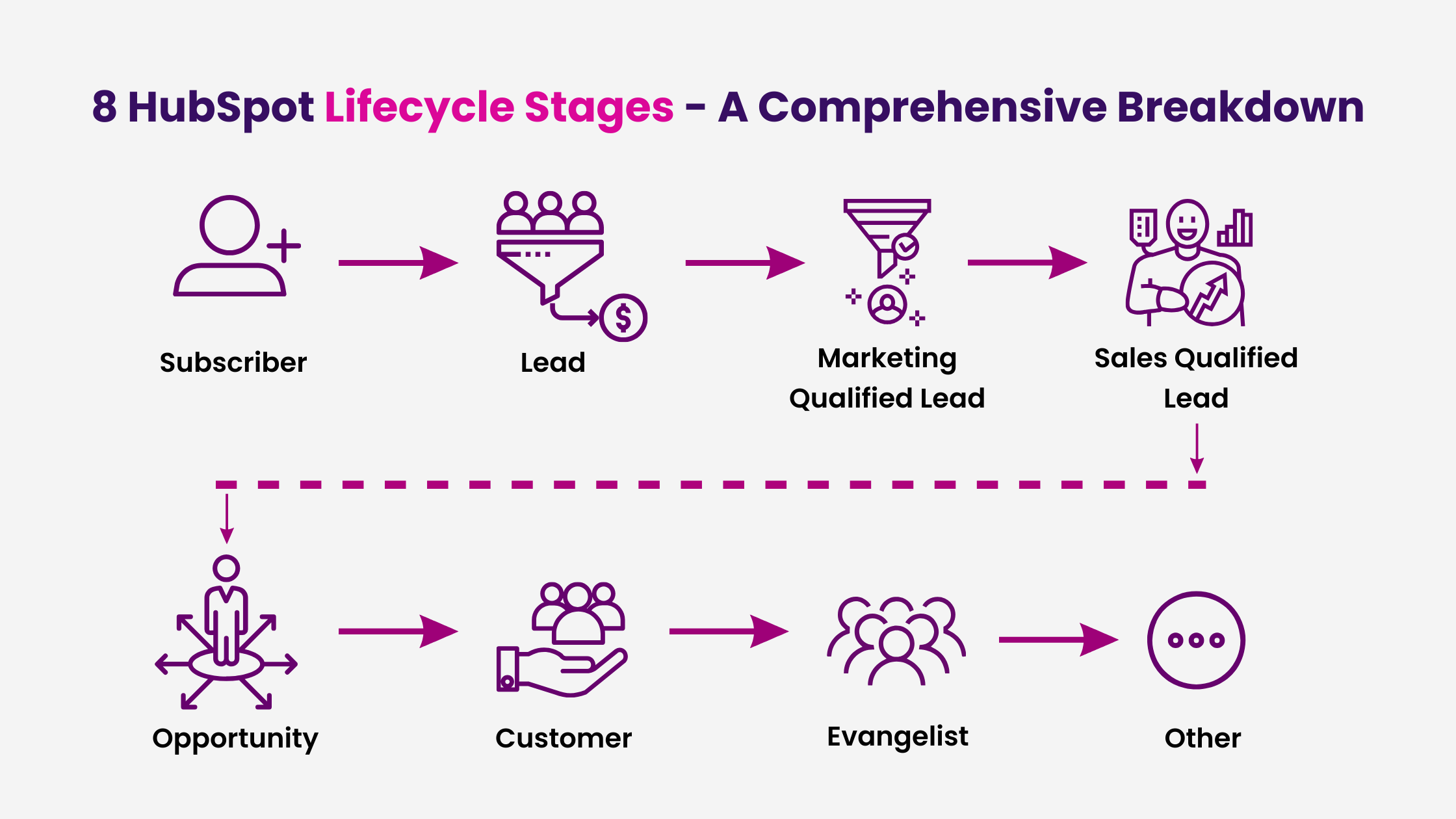
1. Subscriber
The first touchpoint we often encounter while starting with any tool is the Subscriber stage. It’s basically for the audience to stay in the loop of your updates. For example, someone stumbles upon your content and thinks, “Hey, this is interesting!” So, they decide to subscribe to your newsletters or updates. It’s all about signaling a basic level of interest.
Now, why is this stage crucial? Well, identifying subscribers helps you segment that initial spark of curiosity. The foundation allows you to tailor content and keep these individuals engaged. And the best part? As soon as someone subscribes to your content, they’re automatically tagged as a ‘Subscriber,’ you get access to those keen to hear more from you.
2. Lead
Next up in our HubSpot journey is the Lead stage. Leads are individuals who are actively engaging with what you have to offer. They may have downloaded a resource, filled out a contact form, or accessed a unique piece of content. This action is a clear step up from just subscribing; it’s a sign that says, “I’m intrigued; tell me more.” Recognizing these leads is crucial because it allows you to deliver impactful content that aligns more closely with their interests.
When a visitor takes such an action, like filling out a form or accessing gated content, HubSpot seamlessly categorizes them as a ‘Lead.’ This data helps you spot those who are showing interest and ensure they get personalized treatment from you.
3. Marketing Qualified Lead (MQL)
Moving further, we have the Marketing Qualified Lead (MQL) stage. Now, this is where things start heating up. An MQL isn’t just someone who’s interacted with your content; they’ve shown a pattern of engagement that suggests they’re seriously considering what you’re offering. So, why are MQLs so vital? They help you differentiate between casual interest and genuine potential. It’s about recognizing who’s ready for a more tailored pitch or exploring your services.
HubSpot is on top of this game. Based on specific engagement metrics, whether it’s frequent site visits, multiple content interactions, or event sign-ups, HubSpot deftly tags these leads as MQLs. It ensures you know who’s genuinely warming up to your brand, allowing you to engage them precisely.
4. Sales Qualified Lead (SQL)
Stepping into the more advanced stages of HubSpot lifecycle, we land on the Sales Qualified Lead (SQL). An SQL isn’t just interested; they’re showcasing a clear intent to purchase or collaborate. But what makes SQLs stand out? Well! It’s their behavior towards your product or services.It doesn’t mean that they are actively engaging with your offerings, but they are someone who intends to make a purchase.
And with HubSpot’s intuitive system, identifying SQLs becomes second nature. After evaluating a lead’s interactions and gauging their buying intent, HubSpot efficiently tags them as SQLs.
This ensures your sales team can focus their energies on prospects who are not just browsing but are on the brink of making a decision, streamlining the journey from interest to conversion.
5. Opportunity
Moving ahead, we arrive at the Opportunity phase. This stage is all about potential turned into action. An opportunity is not just someone with intent;they’re actively discussing or considering a deal with you. So, why is this stage so crucial? The home stretch is where discussions can lead to concrete deals and collaborations. Every interaction here is crucial; it can make or break the final outcome.
And HubSpot ensures you take advantage of every opportunity. When a lead enters this negotiation or active consideration phase, HubSpot seamlessly transitions them to the ‘Opportunity’ stage. It’s a clear signal for businesses to bring their A-game, ensuring that potential opportunities are nurtured and converted with finesse.
6. Customer
The sweet spot in our HubSpot lifecycle stage journey is the Customer stage. This is where all the nurturing, engagement, and discussions come to fulfillment. A Customer is somebody who has leaped, made that purchase, or engaged in a business transaction with you. So, why is this stage so crucial? It’s the stage of achievement and a testament to your product’s value and the team’s dedication.
But the journey doesn’t end here. Recognizing and categorizing customers is essential for post-sale engagement, upselling opportunities, and fostering long-term loyalty. And with HubSpot’s streamlined system, the moment a deal is sealed, the contact is effortlessly tagged as a ‘Customer.’ This ensures you can continue to engage, delight, and build upon this established relationship, setting the stage for repeat business and referrals.
7. Evangelist
As we move through the HubSpot lifecycle stages, we reach the Evangelist. This isn’t just a customer; it’s someone who’s so thrilled with your product or service that they become a loyal client. So, what makes the evangelist stage so special? It’s about advocacy. Evangelists don’t just use your product; they promote it, becoming organic brand ambassadors. Their word-of-mouth endorsements, glowing reviews, and genuine enthusiasm can drive new leads and maintain your brand’s reputation.
And HubSpot, with its keen insights, helps you identify these gold mines. Contacts can be distinguished as evangelists based on feedback, referrals, or frequent positive interactions.
Recognizing them allows businesses to express gratitude, foster deeper loyalty, and even leverage their testimonials for broader outreach. It’s about celebrating those who celebrate you.
8. Other
Finally, there’s the Other category in the diverse landscape of HubSpot lifecycle stages.
So, why have another stage? It’s about flexibility and inclusivity. Not every contact’s journey will follow a linear or expected path; this stage ensures no one falls through the cracks.
With its adaptable framework, HubSpot ensures that these contacts are still captured and can be revisited for proper categorization later. It’s a reminder that while systems and processes are essential, there’s always room for the outliers, the unconventional, and the unexpected.
And who knows? Today’s other might be tomorrow’s evangelist or customer.
Unlock Your Business Potential With Expert HubSpot Support!
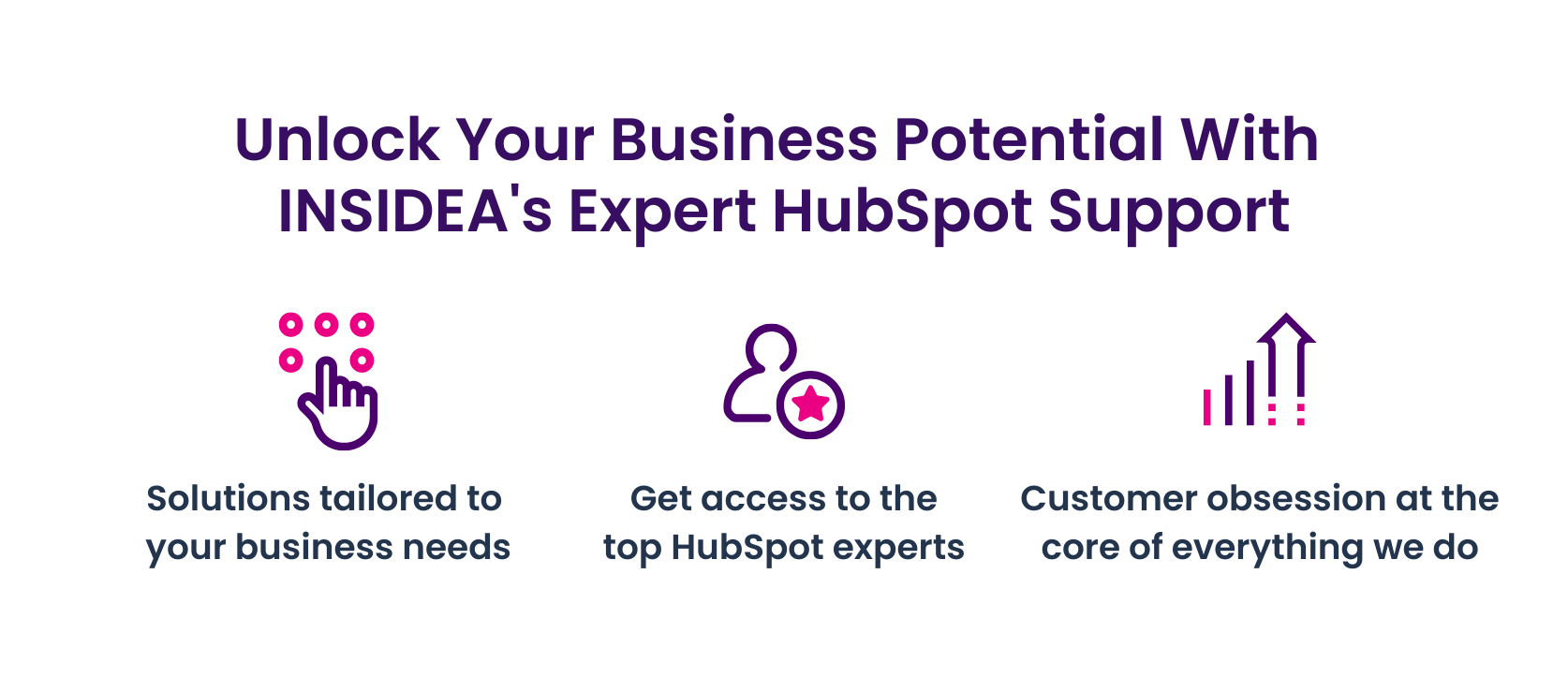
This blog has covered almost everything you need about HubSpot’s lifecycle stages.
Understanding and effectively utilizing these lifecycle stages can drastically improve your marketing and sales efficiency, ensuring that each contact is engaged in the most relevant and impactful manner.
That’s where INSIDEA steps in. We come with a proven track record of tailoring HubSpot for the services your business entails. Our approach is simple: we ensure organizations adopt and thrive in HubSpot’s services.
As a HubSpot Solutions Partner, we take pride in assisting you with streamlining your HubSpot efforts. With our best-in-class marketing, sales, and service solutions, we help you scale exponentially. INSIDEA’s HubSpot Specialists have the required in-depth knowledge and can provide expert guidance on how to use the platform to meet your business needs.
Get in touch today to learn more about how INSIDEA can help you succeed!
- Tailored Experience: For us, user experience is the primary focus. Thus, INSIDEA works with you to ensure your HubSpot experience is tailored to your business needs.
- Industry Expertise: Our team specializes in the setup, implementation, and optimization of HubSpot tools, as well as is well-versed in HubSpot best practices to ensure your business has the highest ROI possible.
- Customer Obsession: Customer satisfaction is the key to success, and we strive to ensure that our customers’ needs are met and exceeded every time.
At INSIDEA, we understand the importance of valuable HubSpot strategies that understand your target audience and drive conversions. Book a meeting with our HubSpot experts to explore how we can help you out with your upcoming projects.


